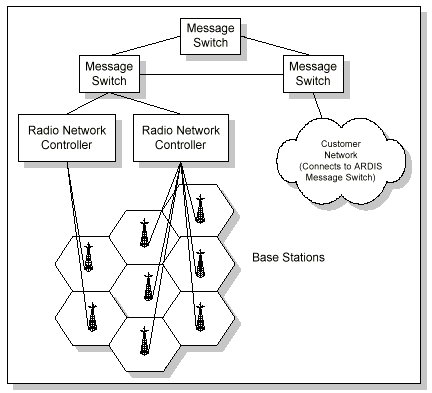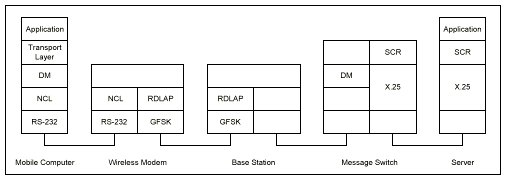|
ARDIS |
ARDIS is a network owned and operated by Motorola, Inc. Originally developed by Motorola and IBM in the early 1980s for IBM customer engineers, service is now available to subscribers throughout the U.S. ARDIS currently has an estimated 65,000 users, mostly using the network in vertical market applications. Almost one third of these users are IBM customer engineers. Few applications are publicly available for the ARDIS network.
ARDIS is best suited for applications that generate short messages and are relatively insensitive to transmission delay. ARDIS uses connection-oriented protocols that are well-suited for host/terminal applications. With typical response times exceeding four seconds, interactive sessions generally are not practical over ARDIS.
ARDIS has a nationwide 25 kHz license that supports one channel. In certain metropolitan areas, up to six additional channels are available.
Based on single frequency re-use, ARDIS makes innovative use of its spectrum allocation, but capacity is inherently limited by its small spectrum and by large base station operating radii. ARDIS is a hierarchical network containing approximately 1,600 base stations that connect to radio network controllers which in turn connect to message switches. Customers connect their servers to message switches, through which all messages pass.
Server connections can be made using X.25, SNA LU 6.2, asynchronous, and several other protocols.

ARDIS supports two different airlinks: the MDC-4800 protocol, which provides 4,800 bps service, and RDLAP, which provides 19,200 bps service. (RDLAP is available only in a few service areas; actual throughput is less than half of the stated rate.)
CDPD has much better performance than ARDIS for several reasons. Unlike CDPD, which uses a distributed router-based network, ARDIS routes all messages through central messages switches, resulting in compromised performance. Furthermore, compared to CDPD, ARDIS uses slower links in its backbone infrastructure.
Because ARDIS was developed before the International Standards Organization (ISO) Open Systems Interconnect (OSI) reference model for networks became popular, developing applications for ARDIS involves working with a number of different protocols.
Consequently, ARDIS protocols do not necessarily fit cleanly into the OSI model. Figure 8 shows some of the key protocols used by ARDIS. DataTAC Messaging (DM) is a non-industry standard Network Layer protocol. Native Command Language (NCL) is a non-industry standard protocol used to communicate with the wireless modem. RDLAP is a Link Layer, with some Network Layer aspects, used for the airlink. Gaussian Frequency Shift Keying (GFSK) is the radio frequency modulation scheme.
In ARDIS, all communications go through one centralized message switch. The message switch uses a protocol called Standard Context Routing, or SCR, for connecting with hosts. Below SCR, ARDIS supports protocols such as X.25 and SNA LU 6.2 for connecting to hosts.

| Send comments to webmaster Copyright © 1997 Derek Mc Donnell. All Rights Reserved. Last updated 07-Apr-1998. |
 |